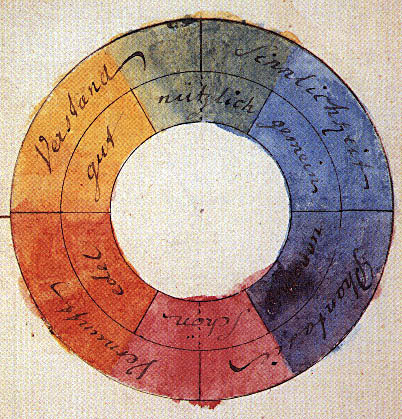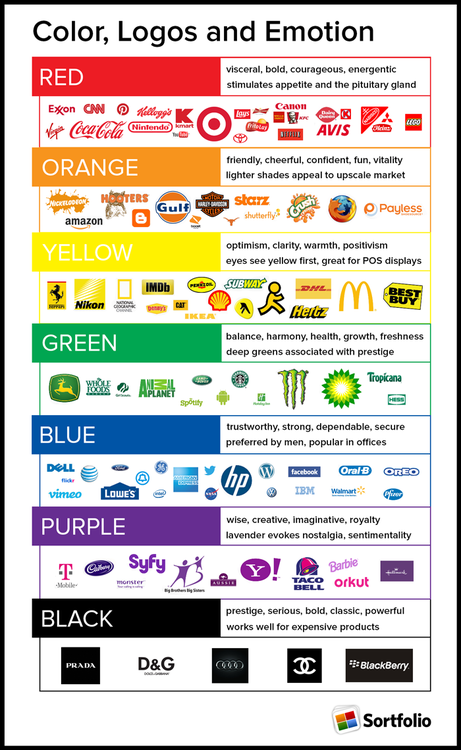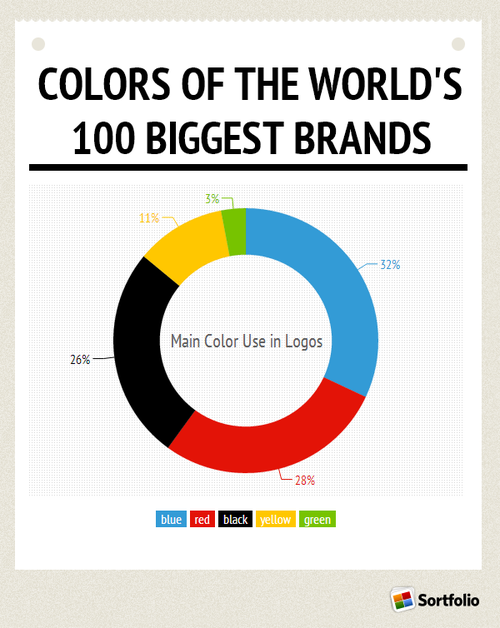The Psychological Effect of Color on Your Brand
I’m fascinated by color. It might have started when I had that epiphany we all have at some point. You know, after a few scotches, when you first realize that although you and your buddy agree that the apple is “red”, in his mind he may be seeing what you call “blue” and you’ll never have any way of knowing the difference. Mind. Blown.
I won’t get in to the physics of color, or the physiology of color perception here (although I’m happy to talk about either if you’re interested), but I am going to talk about the psychological responses that colors can elicit. By understanding what emotions are associated with specific colors, designers and entrepreneurs can use color to their advantage to further strengthen and reinforce their brands’ message, and even more importantly the consumers’ emotional association with their brand.
For the purpose of this post, let’s assume we’re talking about US/Western customs and cultures since different cultures can havedifferent emotional associations for a given color. It’s may seem obvious to us now, but if you think about it, it’s quite interesting that different colors on the same visual object can prompt different psychological responses. We even use color to describe our moods through idioms; “she was seeing red” (mad), “he’s feeling blue” (sad) or “they’re green with envy” (jealous).
The association of color with emotion can be traced all the way back to the late 18th-early 19th century when Johann Wolfgang von Goethe published Theory of Colors. While he failed miserably at attempting to refute Sir Issac Newton’s theory on the refraction of white light in to colors, he did intuitively describe the effect of colors on mood and emotion. Red conveyed an “…impression of gravity and dignity, and at the same time of grace and attractiveness”, while yellow “…has a serene, gay, softly exciting character.”
Goethe Color Wheel, 1809

Fast forward two centuries later and we have marketers with spreadsheets and focus groups collecting hordes of data to tell us what colors evoke which emotions.
Make sure to put some thought in to which colors you choose; studies have shown that color can influence 60% - 80% of a customer’s purchase decision, and is the first thing they will note about your logo. Consumers are also becoming more and more sophisticated and are acutely aware if there is a connect between a brand’s logo and color.
Still not convinced? I bet you can identify this logo purely by the colors.

(If you’re having trouble, just Google it)
In an ideal world, your brand will “own” a color. Think of Facebook blue, Twitter blue or Tiffany blue. UPS goes as far as to use their color in their messaging - “What can Brown do for you?”. They actually refer to themselves as a color! Any competitor in the shipping space will be hard pressed to use the color brown in their marketing, so look at the colors of your competitors” logos and use color as a differentiator.
Remember, the colors should be consistently integrated across all marketing channels; in the logo, on the landing page, on social media cover images and across all marketing collateral.
We’d love to hear how your experiences with color and branding, or even if you’ve got more color related idioms. Good luck!
"I see your true colors… and that’s why I love you" - Cyndi Lauper
by: Krishna Gupta
Source: http://blog.sortfolio.com/post/57526621990/the-psychological-effect-of-color-on-your-brand


No hay comentarios:
Publicar un comentario